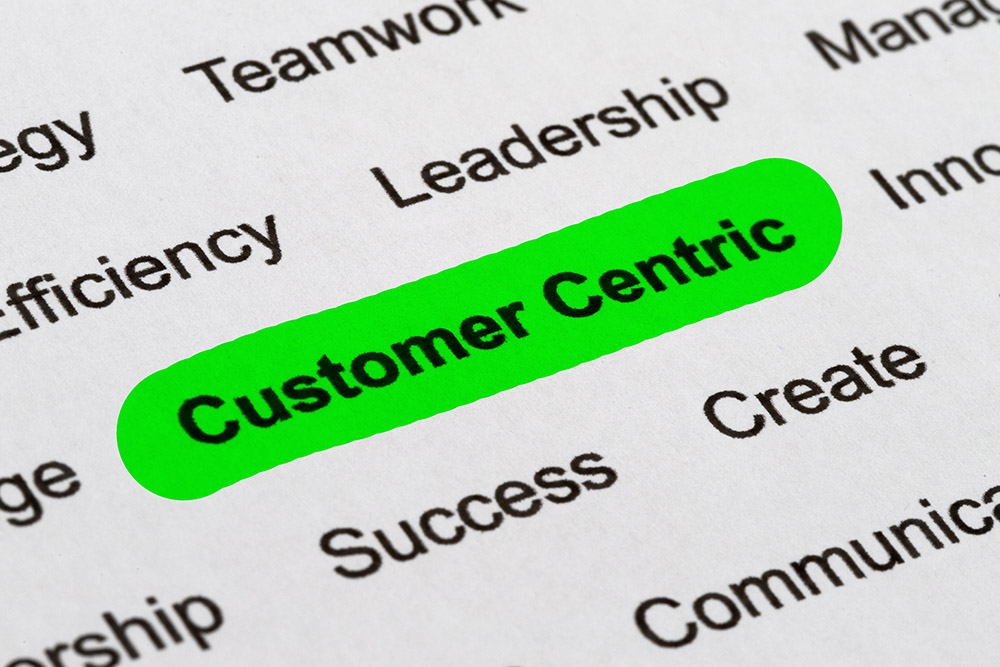New strategic KPIs require a sophisticated listening strategy, says Enrico Gallorini (pictured below) who sets out a new approach to researching data and information and how we use it in order to meet the new demands of the new visitor-centric exhibition universe

If there was one positive aspect to the period of Covid-19, it was probably that of making everyone understand the indispensability of those collective moments that bring together entire communities linked to specific supply chains, commonly known as ‘expositions’.
Unfortunately, this period scattered and, at times, literally lost many competencies in terms of individuals (internal to the company or among its suppliers). These losses prove more than ever the need to refocus on a long-term strategic vision, even while we are still overwhelmed by survival mode operations.
Exhibitions have shown an incredible capacity for resilience, but today more than ever it is necessary to rethink the metrics and KPIs (Key Performance Indicators) in a more structured way.
There is only one thing we cannot doubt while trying to define these new metrics, namely the fact that the post-pandemic winning formula will be different from the pre-pandemic one.
By working professionally on data, analysing it and communicating with our clients regarding the insights gathered, we have a privileged perspective.
Today more than ever, it is necessary to profoundly re-evaluate who the real clients of these events are and how to place said clients at the centre of one’s strategy, in order to be able to create a sustainable and evolved business system.
This means rethinking exhibitions as a whole, starting from the organisational culture and the strategic orientation
For too long importance has been given to the role of ‘exhibiting clients’, seen as a source of revenue, an object of study, an element of competition. We must escape the ‘clients = revenues’ hence ‘clients = exhibitors’ trap. We need to completely rethink the importance we must give to all clients, whether they be exhibitors or visitors, but with particular attention to the role of visitors.
New approach
It is clear that the drivers who are steering a few exhibitions towards considerable success share a common characteristic, also when compared to pre-pandemic times: they have a new approach towards the client-visitor, revolutionising this traditional role by shifting it from a market research object of analysis to that of co-creator.
The interaction must be shifted from an attention to pure ‘data’, to an actual deep dive that can transform that information into a real strategy. This shift is achieved by creating a client engagement path that is favoured by listening, through increasingly structured and precise moments of involvement based on qualitative and detailed listening, to understand needs in a holistic manner. It will be client needs and experiences that will specifically guide the needs of the expo and, consequently, those of the supply chain of reference.
All this is possible only by adopting an approach that is aware of the role of the organiser, who, at this stage, has one absolute priority: the delivery of the exhibition product.

Too much data
Data is becoming a commodity, however, and there is too much of it.
What matters is understanding what to do with that data, which data is needed and how to build and monitor the KPIs that can point to the event’s success.
The evolution we are observing is the successful exhibition’s propensity to place the visitor at the centre of its priorities, to understand their wants and needs and align the decision-making with said wants and needs through qualitative listening. The success factor is doing it in a ‘structured’ way and here very special skills are needed.
Listening is a delicate and complicated art, especially listening with the idea of building strategic trajectories.
Translating the needs and requirements of a visitor, understanding their customer experience in order to create value all round is the new challenge.
The visitor experience, articulated through the various contact channels with the exhibition along the customer journey, must be the reference point for all the organiser’s processes.
Awareness of the importance of visitor centricity comes through:
- Defining the objective and the metrics to be evaluated
- Identifying a model and an adequate reference method to pursue the listening target, with the aim of defining the strategies, operational policies, and investments necessary to engage the visitor.
This listening path needs to go beyond the sometimes-disproportionate attention paid to exhibitors, to re-evaluate the exhibition product itself and the solutions aimed at satisfying the needs and desires of visitors.
‘Multi-channel’ contact tools and new online formats used to liaise with visitors, mean organisers are able to involve the target of the exhibitions, in addition to those attending the event in person.
The role of the organiser will increasingly coincide with the ability to leverage the potential of data and technology, starting though from a much deeper analysis of this information, leaving behind the pure quantitative logic and moving on to a more complex and refined ‘qualitative’ logic.
This means going beyond the demographic, commodity-related, economic data, etc. The data must define the new needs and new business interactions that are the true need of the visitors, which both organisers and exhibitors can satisfy together.
For too long, the expo organiser’s focus has been the exhibitor, with the aim of expanding their numbers and increasing their investment and this perspective has led to the creation of very refined systems of exhibitor profiling. Today, that same approach is shifting to visitors.
The exhibition industry must increasingly equip itself with ‘clever’ tools with which to test, experiment and optimise its business path. And we cannot afford to be short-sighted. New digital formats, the set of interaction and sharing moments with visitors, can lead to the use of these elements of dialogue and comparison as real ‘test and experimentation’ platforms, with the idea of implementing new products and new solutions to the needs of its visitors.
Narrating the needs of visitors
There must be a holistic integration of the enormous amount of data available.
It is necessary to create control dashboards for top management that, in addition to providing directions and the KPIs of reference, can ‘narrate’ the needs of visitors, which then become the new coordinates around which the event must turn.
As with any transformation, there will be a period of adjustment, characterised by the search for new skills.
In the organiser’s new control radar new reference KPIs must not only be economic and financial ones. The new KPIs have the aim of observing if and how much this moment of listening and comparison with one’s visitors works, for example by carefully controlling the metrics regarding how many newsletters are opened, how many websites are used and which apps are downloaded.
In addition to the fundamental KPIs related to customer experience metrics, such as Net Promoter Score, Likelihood of return, Overall satisfaction, and Importance of Events, all the data relating to visitors’ registration elements will become increasingly indispensable, as well the KPIs regarding the value of the exposition’s Brand itself, if we are to understand how visitors can get a better return on their presence at an event.
Organisers must also improve and offer additional services to increase visibility or generate leads during the events, starting with the way exhibitors can interact, pre-expo, with their customers and potential customers. Ultimately, any new strategic vision will be truly focused on visitors.





